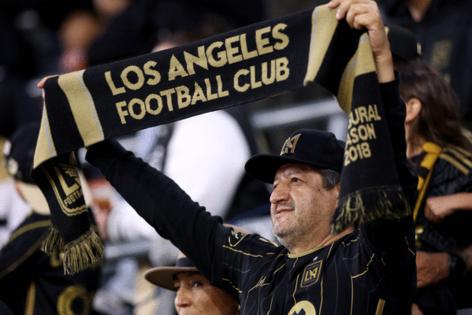Kevin Baxter: Amid rising MLS popularity, should its teams gamble on bigger stadiums?
Published in Soccer
LOS ANGELES — Major League Soccer was born 28 years ago in cavernous NFL stadiums. Three seasons later, the league was averaging 14,312 fans a game in venues built to house five times that many.
At most games it was so quiet you could hear each team's profits drop.
So with the league on the verge of bankruptcy in 2002, clubs began building their own soccer-specific stadiums with smaller grandstands, wider fields and a much better atmosphere. Less than a decade later, more than half the teams played in soccer-specific homes, most with fewer than 26,000 seats. And thanks to that change, MLS not only survived, but began to thrive.
Now, however, with soccer exploding in popularity across the U.S., is the league beginning to outgrow those humble surroundings?
"We don't think so," said Camilo Durana, the executive vice-president for properties and events at MLS.
The numbers tell a different story. On Thursday, when the Galaxy and LAFC renew their rivalry at the Rose Bowl, the game could draw as many as 75,000 people, the second-largest crowd in league history behind only the 82,110 the two teams drew at the Rose Bowl last July. That's more than three times the number of fans they can fit into their soccer-specific stadiums, yet it's just the crest of a very big attendance wave sweeping through MLS.
A little more than halfway through the season, the league is stretching at the seams, having already drawn more than 6.73 million fans, a jump of more than 7% from this time last year. Twenty-five of the 29 teams are drawing larger crowds than they did last season, while nine teams, including LAFC, are playing to 100% of their stadium's capacity. Five matches have drawn more than 65,000 people.
Yet while the attendance growth has been impressive, Duran said it's important to look at more than just the numbers.
"The soccer-specific stadiums provide a lot more than just capacity," he said. "It's better sight lines. The camera angles provide a much better broadcast experience. Our clubs can actually own the facility and dictate the schedule. All that delivers a much better experience.
"They can also make decisions on the type of seating available to fans. Standing sections have been wildly successful. That has helped us in the last 24 months to drive attendance up."
...continued
©2024 Los Angeles Times. Visit latimes.com. Distributed by Tribune Content Agency, LLC.







Comments